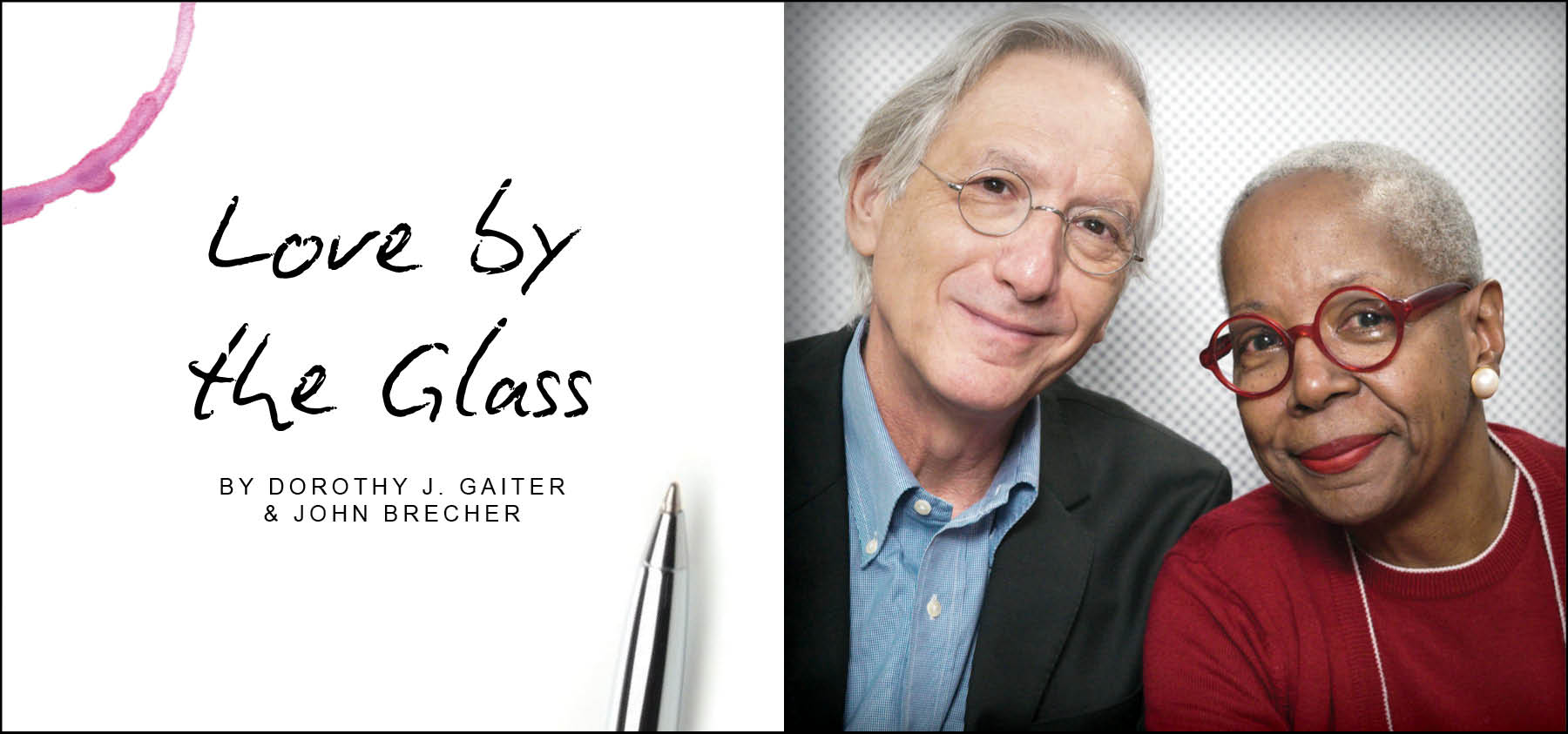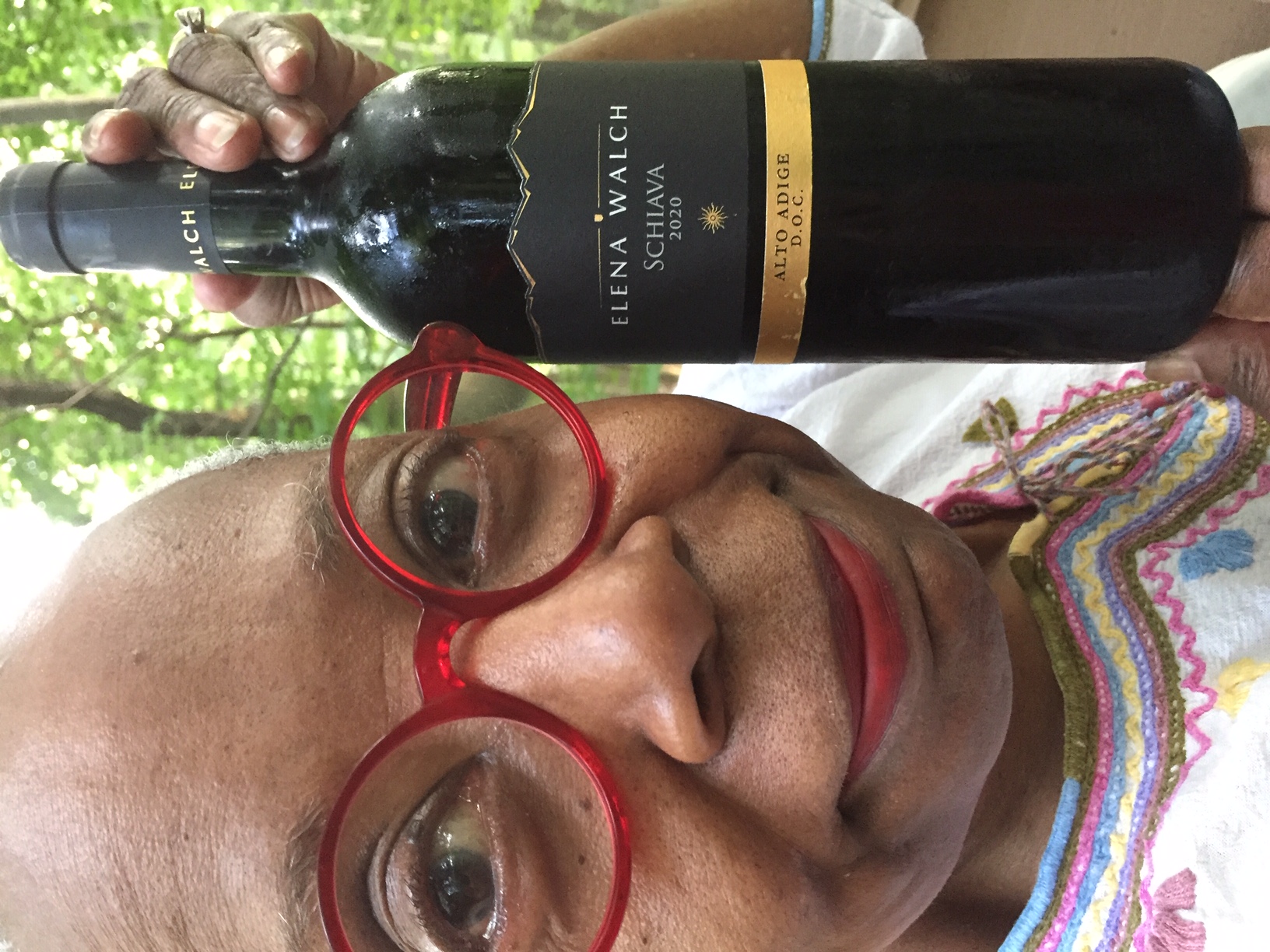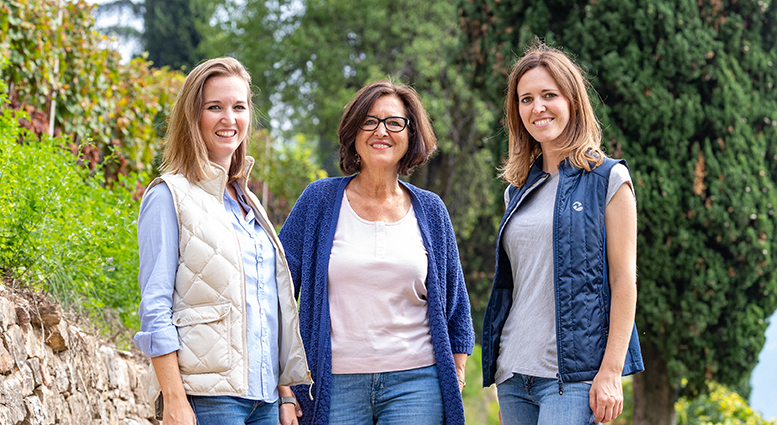
John was simply looking for some drinkables – inexpensive, easy-drinking wines we could pop open and enjoy without much thought. He went to a trusted store’s online site, narrowed the search to 2019 and 2020 – we wanted these to be young and lively – put in the maximum price and sorted from least expensive. His goal was to buy a mixed case so we’d get a discount.
He was at $15.99 – still less than $15 with the discount – when he saw it: Elena Walch Schiava 2020 from the Alto Adige region of Italy.
Hmmm.
 Elena Walch, an architect, in 1985 married Werner Walch, whose family owned a great deal of vineyards in Alto Adige. She asked to carve out her own separate winery and her first vintage was 1988. She immediately made a splash on the international wine scene with wines that were clean and focused while also retaining a sense of place. We’ve been fans for a very long time.
Elena Walch, an architect, in 1985 married Werner Walch, whose family owned a great deal of vineyards in Alto Adige. She asked to carve out her own separate winery and her first vintage was 1988. She immediately made a splash on the international wine scene with wines that were clean and focused while also retaining a sense of place. We’ve been fans for a very long time.
Twenty years ago, in a blind tasting for The Wall Street Journal, we loved Elena Walch’s 1999 “Castel Ringberg” Pinot Grigio. We wrote: “Distinctive, with citrus, honey and some tastes of earth. Makes you sit up and take notice. A Pinot Grigio with gravitas.”
We’ve also enjoyed Elena Walch’s Gewürztraminer and others. Good wineries make good wines. What we mean is that it’s important to have some names you trust broadly, for all kinds of wine. Elena Walch has been one of those for us.
But Schiava?
When John puts together a case like this, his goal is to do it in minutes without doing any research, which surely would start us down a rabbit hole considering how many years we’ve been doing this and how deeply interested we are in the subject of wine. He had a vague sense that we’d written about Schiava once and that it is a light red, which would make it the only red in our case.
He hit “Add to Cart.”
We opened the wine on the deck while watching sunset one night and, oh my. It was one of the most charming wines we’ve had in a while – so light it seemed to float, with nice acidity, soft tannins, and earthy, raspberry notes. It reminded us a bit of a young, very good Beaujolais, but more weightless, wearing nothing but a smile. It also seemed as much like a white as a red. Although we had it at cellar temperature, we wish we’d given it a bit more of a chill. We were glad we’d had the 2020 because this seemed like a wine that needed to be drunk immediately.
Then we looked up Schiava and this is a situation were a little bit of knowledge would have been a bad thing. Pretty much every wine book we have hates on this grape, some more than others (“undistinguished” seems to be the most charitable adjective). There are various sub-varieties of it, and the grape is known by other names, including Trollinger in Germany, and for many years was by far the most widely grown grape in Alto Adige, better known for its productivity than its quality. It’s often used in blends. It has also been crossed with Riesling to produce Kerner, a grape that makes aromatic white wines. David Ramey’s Sidebar range of small-production wines has a delightful Kerner that he sources from Lodi.
As recently as 2002, Joseph Bastianich and David Lynch wrote in “Vino Italiano” that “American importers avoid Schiava-based reds,” which are “not without appeal,” but are “a remnant of a bygone era – namely, the days when Trentino-Alto Adige wasn’t northern Italy, but southern Austria. It isn’t necessarily that the region is incapable of producing more full-bodied wines, but that old-time farmers weren’t looking for them. The contadini of the past wanted rustic reds that could be consumed all day long, not for pleasure as much as nourishment.”
 All well and good, but, in that case, why in the world is a well-regarded winery like Elena Walch making a 100% Schiava wine and exporting it to the U.S.? We dropped a note to the winery and asked if we could speak with Elena Walch about this. In no time, we received a note from her daughter Karoline saying she’d love to talk.
All well and good, but, in that case, why in the world is a well-regarded winery like Elena Walch making a 100% Schiava wine and exporting it to the U.S.? We dropped a note to the winery and asked if we could speak with Elena Walch about this. In no time, we received a note from her daughter Karoline saying she’d love to talk.
(Elena Walch with her daughters, Karoline (left) and Julia)
Karoline, 33, and her sister, Julia, 35, have taken over the winery from their mother, who is 71. Their father is 70. The Walch winery, from which their mother created her enterprise, was founded in 1869. Karoline and Julia are the fifth generation working in wine. When we asked Karoline about their current titles, she responded: “As a family estate, we don’t get to wear those fancy titles.” The winemaker is Stefano Bolognani.
Elena Walch winery now has 160 acres, producing about 46,000 cases. Of that, about 1,700 cases is Schiava, which the winery has produced from the beginning. Why? We set up a Zoom to find out. Karoline’s answers have been edited and condensed for space.
Tell us about this grape.
Schiava has a very interesting history. It is a very charming wine and variety. To me, Schiava is a very approachable, easy-drinking but very good wine. Sometimes you just want a good glass of wine. And I think Schiava is the perfect answer to this. However, unfortunately, it is decreasing quite dramatically, production-wise, not on our estate necessarily but overall in the region. I looked back at some numbers in the region and in the ’70s the production was almost 68 percent of the total production. Alto Adige at the time was red-wine country. This has changed. Nowadays, there’s more white than red so there’s something like 38 or 40 percent red but the rest is white wine [led by Pinot Grigio]. Most of the Schiava vineyards turned into white vineyards. Now we’re down to 11 percent Schiava.
 Why, if it’s such a lovely wine?
Why, if it’s such a lovely wine?
Historically, unfortunately, it was produced on a larger scale and probably produced in areas where it shouldn’t be planted. It was widely distributed. Now, though, I think producers realize that if you plant Schiava in the right places it is a gorgeous wine and this is exactly how my family winery sees it.
Schiava is a classic variety. It’s an indigenous variety and it’s part of our history and I think you should never neglect your history. You learn from your history. Mistakes were made in the ’70s. But now we realize you can’t plant it on vineyards that are too high. You need to reduce yield. We’ve gone from pergola to Guyot [trellising systems]. A lot of things in the vineyard have changed. Nowadays, producers who really believe in Schiava make beautiful wines.
How are your sales?
Schiava has been slightly increasing in production on our end because we realize that right now Schiava is a perfect wine that people love because it’s easy to drink, it’s kind of lower in alcohol [the 2020 was 13%], it’s fresh, food-driven, a lighter-side red wine. Internationally we have been doing very well. It’s doing extremely well in the United States.
So you will keep producing it?
I will always keep a Schiava in our portfolio because it is part of our history and I love it.
How do you make it?
First of all, it starts in the vineyard. Choosing the right vineyards – maybe 300 meters high, that’s what we look for in Schiava. And warmer areas, but where you still have good temperature situations between day and night. And then when it comes to the production of it, we do green harvesting to reduce yield because Schiava is a variety that produces a lot if you don’t intervene, so we do green harvesting quite early to reduce the crop.
 The vinification itself is not too difficult, yet Schiava in the cellar needs a lot of attention because it tends to be quite reductive, so you have to do a lot of pumping over to keep it kind of clean. It ferments for between seven and 10 days in stainless steel tanks and then it matures in large wooden oak casks – beautifully hand-carved old, old oak barrels (photo left). They’re huge – they go from 80 to 180 hectoliters [about 2,000 gallons to almost 5,000]. They are all hand-carved and dedicated to my ancestors. It’s the story of my family and the winemaking at the time. And that is where the wine matures, anywhere from, say, four to six months.
The vinification itself is not too difficult, yet Schiava in the cellar needs a lot of attention because it tends to be quite reductive, so you have to do a lot of pumping over to keep it kind of clean. It ferments for between seven and 10 days in stainless steel tanks and then it matures in large wooden oak casks – beautifully hand-carved old, old oak barrels (photo left). They’re huge – they go from 80 to 180 hectoliters [about 2,000 gallons to almost 5,000]. They are all hand-carved and dedicated to my ancestors. It’s the story of my family and the winemaking at the time. And that is where the wine matures, anywhere from, say, four to six months.
Does your family drink much Schiava?
We drink it quite a lot. It’s a very honest wine. It’s a social wine. It brings people together and you don’t think about it too much but it’s a good quality red wine. And not every wine needs to be where you do a lot of thinking and analyzing. Schiava is what it is. It’s good with cured meat, antipasto, white meat, even with some seafood because it has nice acidity and the tannins are very soft and silky.
The bunches of Schiava tend to be very large. And it also has very big berries. So it’s a very juicy grape variety because the skin is very soft. It’s a very fresh and fruit-driven variety.
So it would taste good just to pick and eat?
Every child loves Schiava because it’s the best grape to eat and it’s probably the first variety you learn as a child growing up in the vineyards because it’s the variety that tastes the best when eating it out in the vineyard.
Funny – that pretty much sums up how we felt when we drank it. Thanks.
Dorothy J. Gaiter and John Brecher conceived and wrote The Wall Street Journal's wine column, "Tastings," from 1998 to 2010. Dorothy and John have been tasting and studying wine since 1973. In 2020, the University of California at Davis added their papers to the Warren Winiarski Wine Writers Collection in its library, which also includes the work of Hugh Johnson and Jancis Robinson. Dottie has had a distinguished career in journalism as a reporter, editor, columnist and editorial writer at The Miami Herald, The New York Times, and at The Journal. John was Page One Editor of The Journal, City Editor of The Miami Herald and a senior editor at Bloomberg News. They are well-known from their books and many television appearances, especially on Martha Stewart's show, and as the creators of the annual, international "Open That Bottle Night" celebration of wine and friendship. The first bottle they shared was André Cold Duck. They have two daughters.
Banner by Piers Parlett










